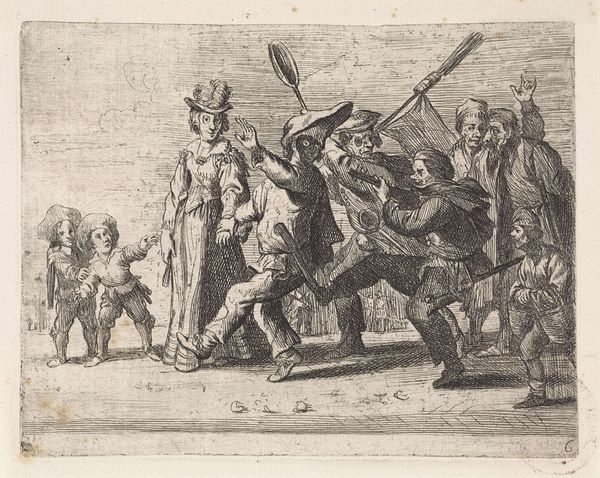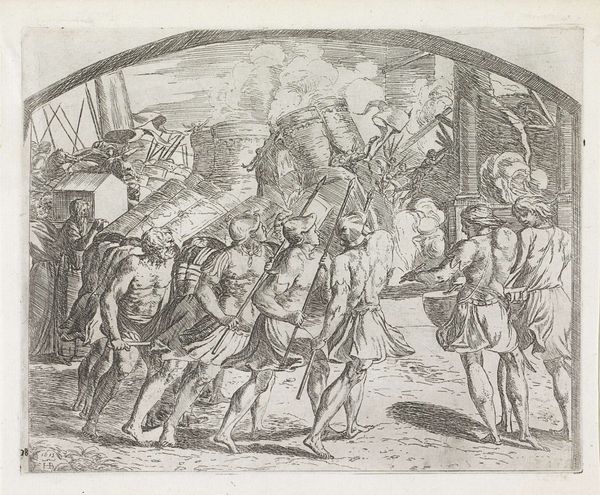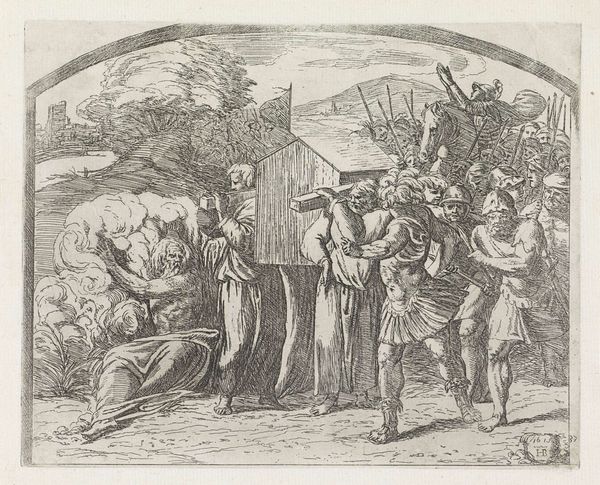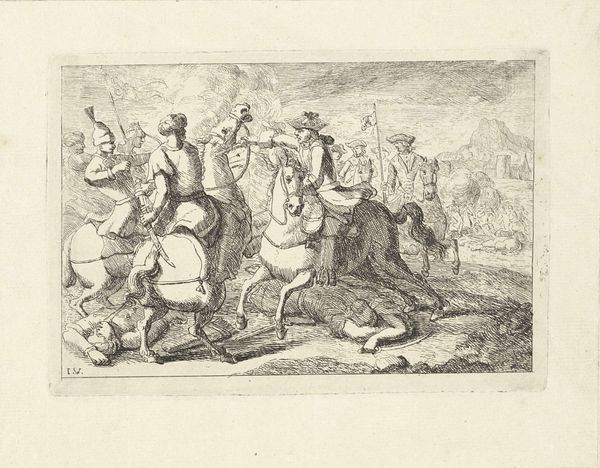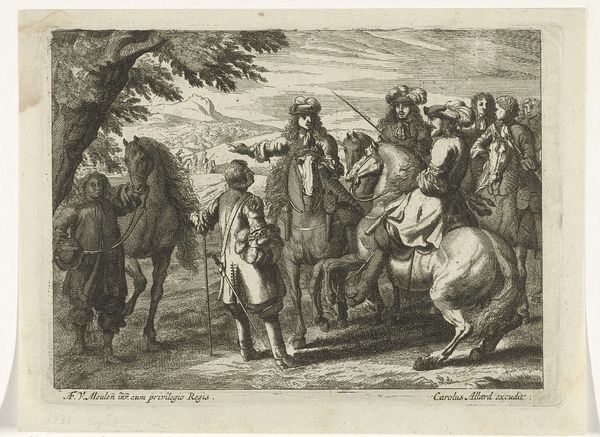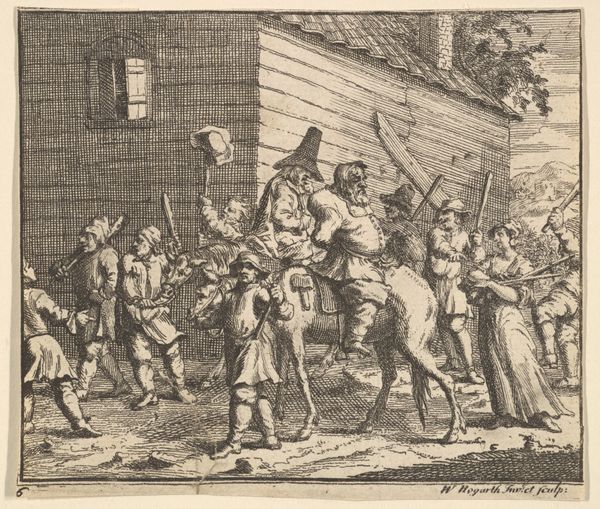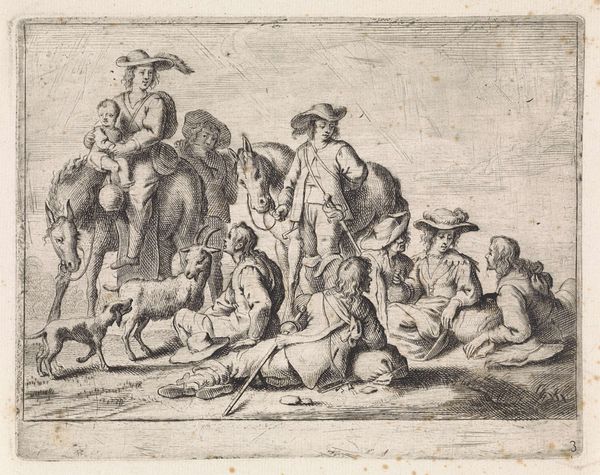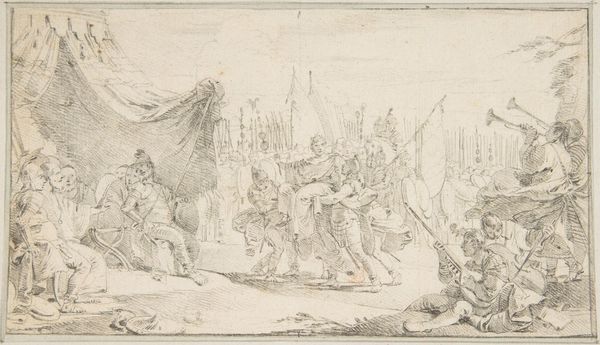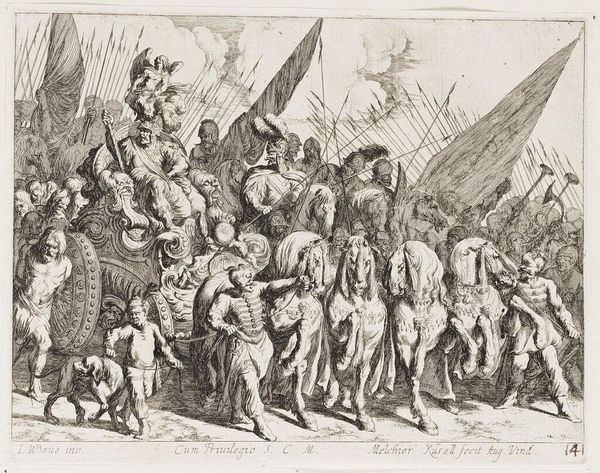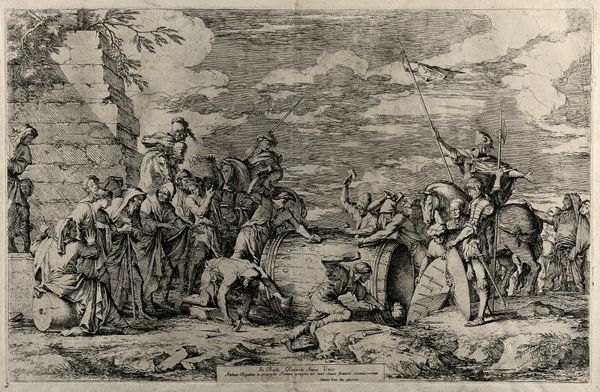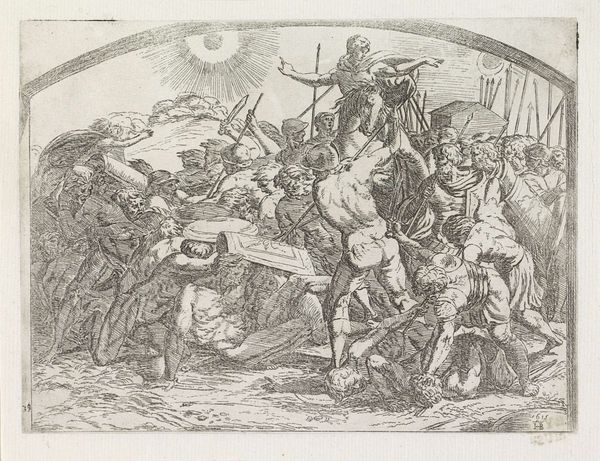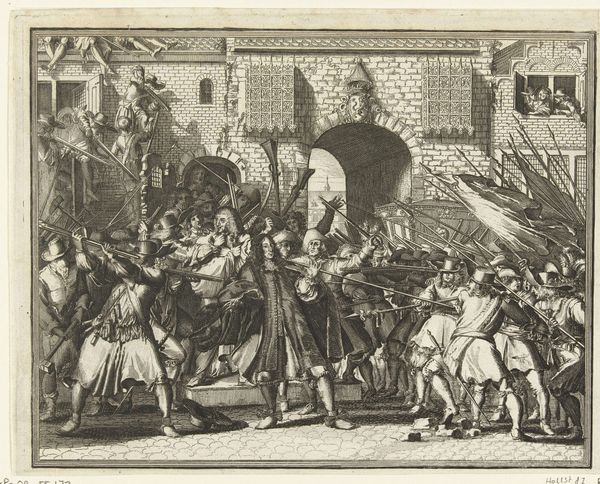
print, etching
#
baroque
# print
#
pen sketch
#
etching
#
figuration
#
genre-painting
Dimensions: height 115 mm, width 149 mm
Copyright: Rijks Museum: Open Domain
Curator: Cornelis de Wael’s “De maskerade”, an etching produced sometime between 1630 and 1648, presents a lively scene. What catches your eye initially about the work? Editor: There’s an energetic chaos to it all! The composition feels almost theatrical, a band of figures in mid-performance bursting from the centre of the scene towards us. There's a disquieting dissonance created by the crude yet energetic pen strokes. Curator: Indeed, the dynamic energy is certainly present. De Wael has utilized line work and a contrast between light and shadow in the etching to generate that specific sense of frenetic movement and high spirits within the composition. It does evoke theatre, and commedia dell'arte comes to mind, considering how character types intermingle here. Editor: Considering that some figures here are masked, the social aspect is highlighted as an act of display. It asks: what does a spectacle like this actually accomplish? To what end are we seeing such a varied and potentially disorderly cohort assembled together? The print feels documentary, even ethnographic in that regard. Curator: Yes, viewing it through the lens of social documentation is relevant, considering de Wael’s frequent depictions of everyday life in baroque era Italy, but formally the linear composition propels the movement towards the left; from a formal standpoint, the mask hides identity but the revealed, heightened emotion allows each figure to stand on its own within the overall design of the work. What is concealed comes forth. Editor: Agreed, the interplay of revelation and concealment within that carefully wrought design seems vital to this period's reflections on court life. In terms of imagery, this seems to question who really dictates terms of public behaviour. Are those with literal power really calling the shots when we attend to spectacle, as embodied by performance? Curator: Precisely. The etching showcases this constant shifting within Baroque power dynamics, both socially and within the framework of its aesthetic architecture. That relationship reveals de Wael's focus is on how the illusion of drama affects the everyday world that houses it. Editor: Yes, observing the work, you can sense de Wael invites the viewer to discern truth from artifice and to interrogate performance – this remains potent, even beyond its era of making. Curator: Ultimately, “De Maskerade" demonstrates, through carefully placed form and chaotic figures, that artifice might just have been as foundational to the era’s concept of social performance as truth. Editor: It leaves you contemplating: Who are the actors here, and to what larger drama are they all contributing? Intriguing stuff!
Comments
No comments
Be the first to comment and join the conversation on the ultimate creative platform.
